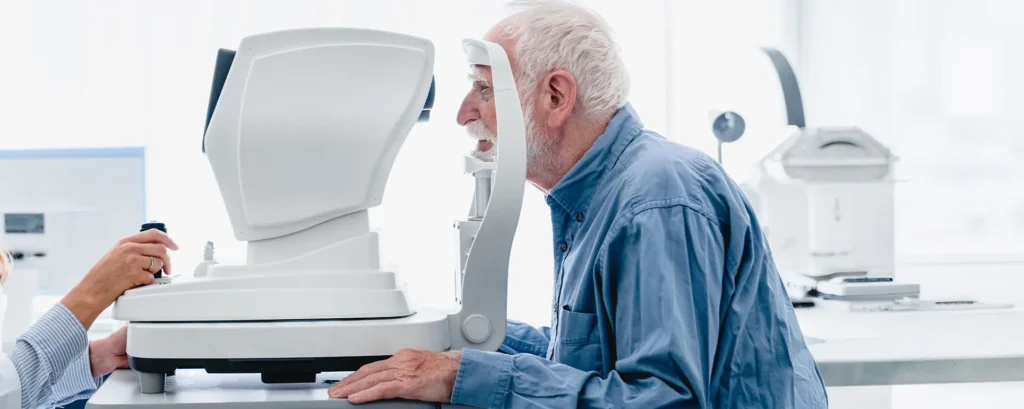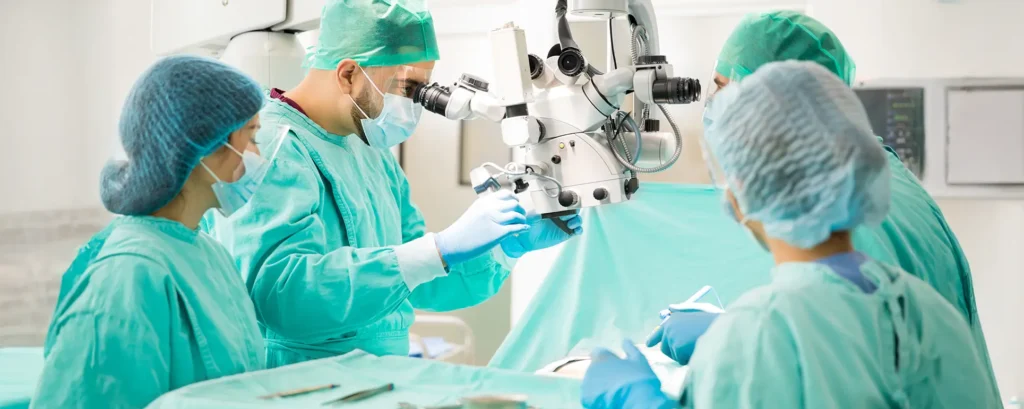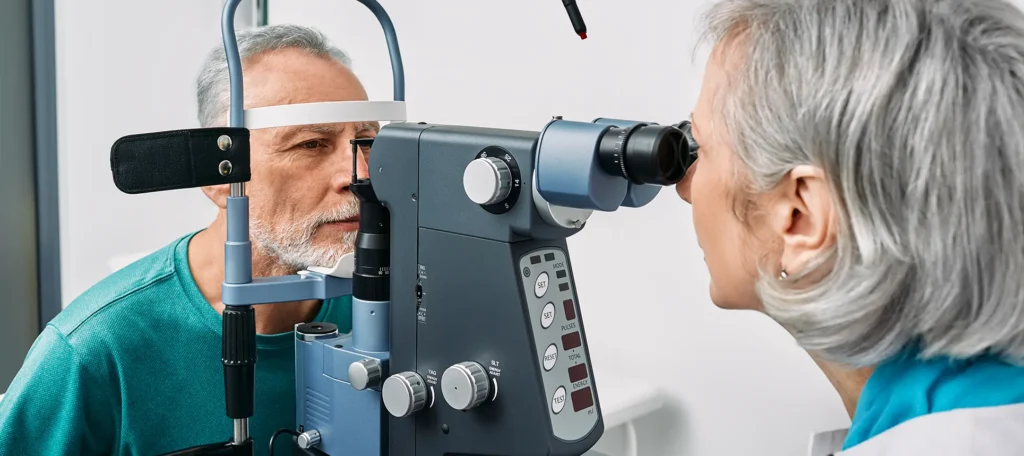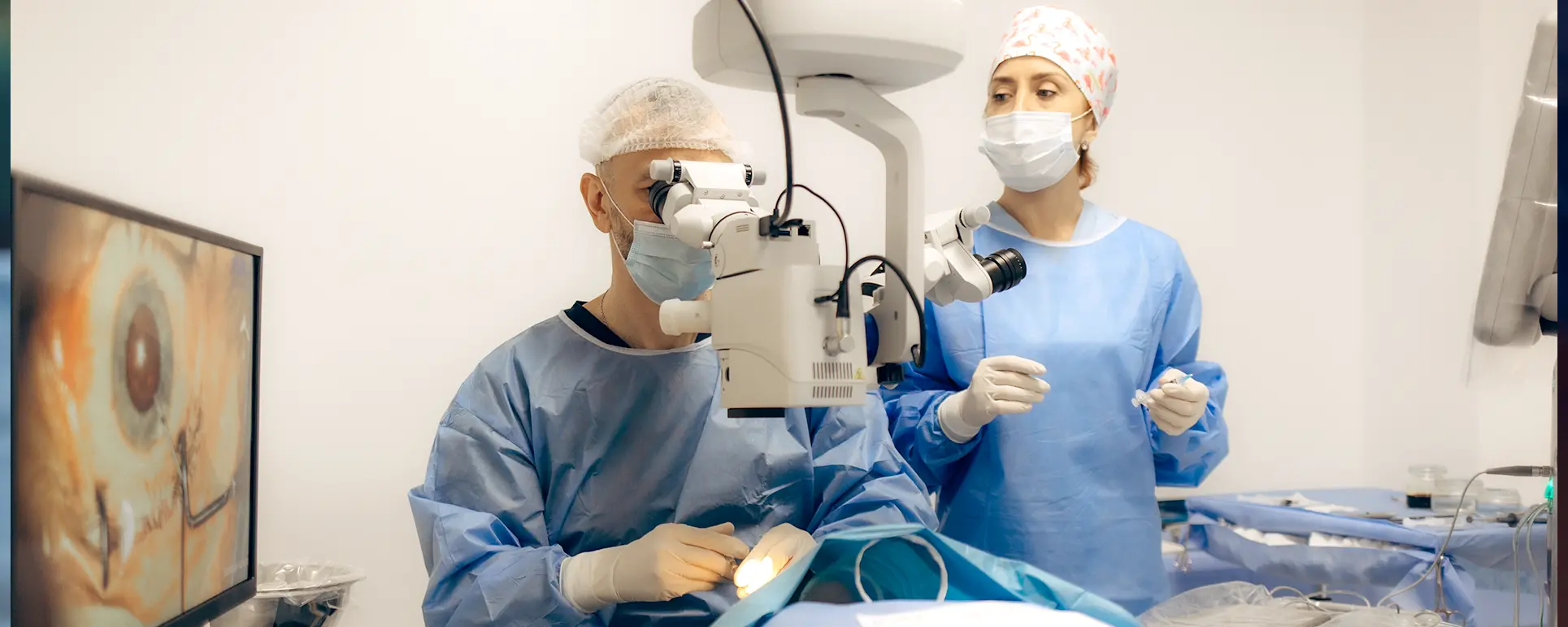If you’re living with ocular hypertension and you’ve been told you need cataract surgery, you probably have a few questions—maybe even some concerns. That’s completely understandable. Ocular hypertension isn’t the same as glaucoma, but it does carry the risk of progressing to it. So, when eye pressure is already higher than normal and cataracts are clouding your vision, you want to be absolutely sure that any treatment you pursue helps—not hinders—your eye health.
In this article, we’re going to walk through exactly how cataract surgery can affect intraocular pressure (IOP), what you should expect before and after the procedure, and how your ophthalmologist will carefully monitor your optic nerve health throughout. Whether you’ve had ocular hypertension for years or it’s a relatively new diagnosis, this is your guide to understanding the intersection of these two conditions and how to move forward confidently.
What Is Ocular Hypertension, Exactly?
Let’s start with the basics. Ocular hypertension means the pressure inside your eye is higher than what’s considered normal. Typically, normal IOP falls somewhere between 10 and 21 mmHg. Anything above 21 mmHg is labelled as “high”, though not everyone with elevated pressure has damage to their optic nerve.
Unlike glaucoma, ocular hypertension doesn’t necessarily cause vision loss. But it’s a warning sign—and it does mean your eye is under more mechanical strain than it should be. For some people, this added pressure eventually leads to glaucoma, especially if left unmanaged.
If your optometrist or ophthalmologist has picked up on this during routine eye checks, they’ve likely recommended regular monitoring, possible eye drops to lower pressure, or lifestyle changes to reduce your risk. It’s a condition that doesn’t always demand urgent treatment but requires consistent attention.
Understanding Cataracts in the Context of High Eye Pressure

Cataracts develop when the clear lens inside your eye becomes cloudy, usually due to ageing. However, people with ocular hypertension might experience earlier or faster cataract progression—particularly if they’ve been on steroid eye drops, which are sometimes used to control IOP or inflammation. Steroids, while effective, are known to increase the risk of cataract formation.
There’s also the issue of overlapping symptoms. Blurry vision from a cataract can sometimes mask or mimic the early signs of glaucoma, making it a little trickier to tell what’s going on inside your eye. That’s why it’s so important to have advanced scans—like optical coherence tomography (OCT)—before cataract surgery, especially if ocular hypertension is already present.
In many cases, removing a cataract in someone with ocular hypertension doesn’t just improve vision. It can also reduce IOP, which is good news. But it’s not always predictable, and pressure-lowering benefits may vary depending on other individual risk factors.
Can Cataract Surgery Actually Lower Eye Pressure?
Here’s where things get interesting. Yes—cataract surgery can help lower intraocular pressure in patients with ocular hypertension. In fact, research has shown that removing the natural lens (which thickens over time and takes up more space in the eye) can improve aqueous humour outflow. That’s the fluid your eye produces and drains constantly. Better drainage means less pressure.
Some studies suggest that IOP may drop by an average of 2–4 mmHg after uncomplicated cataract surgery in people with ocular hypertension. While that might not sound like much, even a small reduction in pressure can be clinically meaningful—especially if you’re close to the threshold where damage to the optic nerve might begin.
The pressure-lowering effect is usually most noticeable in the first few months after surgery and can last for years, but it’s not guaranteed to replace the need for eye drops or other IOP-lowering treatments. For some people, it helps reduce medication burden. For others, it’s simply a bonus.
Risks to Consider When Having Cataract Surgery with Ocular Hypertension
As beneficial as cataract surgery can be, it isn’t risk-free—especially if you already have elevated eye pressure. The main concern is that surgical trauma, inflammation, or postoperative complications could cause a temporary spike in IOP. If this happens, the optic nerve (which may already be under pressure) could be at higher risk of damage.
Here are a few things your ophthalmologist will keep an eye on:
- IOP spikes immediately after surgery: This can occur within the first 24 hours due to retained viscoelastic substances used during the procedure. It’s usually managed with pressure-lowering drops or oral medication.
- Prolonged inflammation: Patients with high eye pressure are more prone to prolonged postoperative inflammation, which itself can drive pressure higher. Anti-inflammatory drops help manage this.
- Steroid response: Some individuals are “steroid responders”, meaning their IOP rises when they use steroid drops. This is especially relevant after cataract surgery, when steroids are used to reduce inflammation.
Knowing all this, your surgeon will likely tailor the postoperative plan specifically to your needs. This might include choosing a specific type of IOL (intraocular lens), adjusting the steroid regimen, or planning for additional pressure checks in the days after your procedure.
Should Cataract Surgery Be Combined with a Glaucoma Procedure?

This is a key consideration for some patients. If your ocular hypertension is well-controlled and your optic nerve looks healthy, standard cataract surgery may be all that’s needed. But if your IOP has been creeping up despite treatment—or if early signs of glaucoma are appearing—your surgeon might suggest a combined approach.
Options include:
- Phaco-trabecular surgery: Combining cataract extraction with a minimally invasive glaucoma surgery (MIGS), such as iStent insertion.
- Trabeculectomy or tube shunt: In rarer cases, more traditional glaucoma surgery may be added—though this is usually reserved for patients with confirmed glaucoma.
The benefit of combining procedures is twofold: it reduces IOP more significantly and potentially reduces the need for ongoing drops. But it also introduces more complexity and a slightly higher risk profile, so it’s not recommended for everyone.
Preoperative Work-Up: What to Expect
Before your cataract surgery, your ophthalmologist will run a series of tests that are particularly important if you have ocular hypertension. These include:
- IOP measurements throughout the day, to establish your pressure profile.
- Optic nerve imaging using OCT, to detect any signs of nerve fibre thinning.
- Visual field testing to check for early signs of peripheral vision loss.
- Corneal thickness measurements (pachymetry) because a thicker cornea can artificially raise IOP readings.
These tests help differentiate between true ocular hypertension and early or undiagnosed glaucoma. The results will guide how your surgery is planned and what sort of follow-up you’ll need.
Intraoperative Considerations: What the Surgeon Takes into Account
On the day of surgery, several key decisions help reduce your risk of pressure-related complications. These include:
- Choosing an IOL that doesn’t increase postoperative inflammation
- Using minimal amounts of viscoelastic substances
- Performing thorough washout at the end of surgery to prevent pressure spikes
- Applying prophylactic pressure-lowering drops during or immediately after the procedure
Your ophthalmologist may also avoid certain techniques that are known to cause more trauma or inflammation, depending on your eye anatomy and IOP history.
Postoperative Monitoring: The Critical First Few Weeks

After surgery, your eye will be closely monitored for both healing and IOP control. You’ll usually be seen the next day, then a week later, and again within the first month. These check-ups are especially crucial for people with ocular hypertension.
Here’s what they’re looking for:
- Any sudden rise in IOP
- Early signs of optic nerve stress
- Persistent inflammation
- Response to steroid drops
Depending on how your eye behaves, they might switch you to a non-steroidal anti-inflammatory drop, temporarily restart your pressure-lowering medication, or even prescribe oral acetazolamide to keep pressure in check.
Long-Term Outlook: Can Cataract Surgery Prevent Glaucoma?
This is a common question—and the answer is nuanced. Cataract surgery does appear to reduce the risk of glaucoma development in people with ocular hypertension, especially if it leads to a sustained drop in IOP. But it’s not a substitute for long-term monitoring.
Even if your pressure comes down postoperatively, you’ll still need routine follow-up to make sure your optic nerve remains healthy. For some, this may mean twice-yearly checks; for others, annual reviews are enough. But don’t assume the problem is solved forever—keep your appointments, and raise any new symptoms (like haloes, headaches, or eye pain) promptly.
Lifestyle Tips for Managing Ocular Hypertension Around Surgery
Alongside your medical treatment and surgery, there are practical things you can do to support eye health during this period. Here are a few:
- Keep hydrated, but avoid overconsumption of caffeinated drinks, which can temporarily raise IOP.
- Elevate your head slightly when sleeping, as lying flat can increase eye pressure.
- Avoid strenuous inverted postures, especially in yoga or weightlifting, for a few weeks post-surgery.
- Stick to your prescribed eye drops, even if you feel fine. Don’t stop them without medical advice.
Lifestyle habits like managing blood pressure, maintaining a healthy weight, and avoiding smoking all have indirect benefits for your eyes too.
FAQs: Cataract Surgery in Patients with Ocular Hypertension
- Can cataract surgery help lower my eye pressure if I have ocular hypertension?
Yes, cataract surgery can lead to a modest but potentially meaningful reduction in intraocular pressure (IOP) for patients with ocular hypertension. This is because removing the thickened natural lens can improve fluid outflow in the eye, particularly through the trabecular meshwork, which is responsible for draining aqueous humour. While this effect may reduce reliance on pressure-lowering drops, it varies from person to person and isn’t guaranteed to eliminate the need for future treatment or monitoring. - Is it safe to have cataract surgery if my eye pressure is high?
Generally, it is safe to proceed with cataract surgery even if you have ocular hypertension, as long as your ophthalmologist carefully evaluates and manages your condition. The key is to ensure your optic nerve is not already damaged and that any pressure spikes during or after surgery are well-controlled. Your surgeon may adjust medications or intraoperative techniques to keep your IOP stable and will closely monitor you during recovery. - Will I still need glaucoma drops after the surgery?
You might still need to use glaucoma or pressure-lowering eye drops after cataract surgery, especially if your IOP remains above the target level your eye doctor has set. For some patients, surgery reduces the number of drops required, while others can discontinue them altogether. However, decisions about stopping or adjusting medication are always based on post-surgery pressure readings and optic nerve health, so your doctor will guide you accordingly. - What happens if my eye pressure increases after the operation?
A temporary rise in eye pressure after cataract surgery is relatively common, especially in patients with pre-existing ocular hypertension. This can be due to retained viscoelastic material, inflammation, or a response to steroid drops. Your surgeon will check your IOP at follow-up visits, and if needed, may prescribe additional medication or make changes to your treatment plan to bring the pressure down and protect your optic nerve. - Is cataract surgery more risky for people with ocular hypertension?
While the procedure itself is not inherently more dangerous, patients with ocular hypertension do require closer monitoring before, during, and after cataract surgery. The main concern is the added risk of IOP fluctuations that could affect the optic nerve. With a customised surgical plan and careful aftercare, these risks can be effectively managed, making surgery generally very safe for most individuals in this group. - Could cataract surgery prevent me from developing glaucoma in the future?
Cataract surgery has been shown to reduce the risk of developing glaucoma in some patients with ocular hypertension, particularly if it results in a lasting reduction in IOP. However, it’s not a guaranteed preventive measure. Regular follow-up is still essential, as glaucoma can develop even when pressure seems well-controlled, especially if other risk factors are present, such as a thin cornea or family history of the disease. - Will I need a different type of lens implant if I have high eye pressure?
In most cases, patients with ocular hypertension can receive the same types of intraocular lenses (IOLs) as other cataract patients. However, your surgeon may choose a lens that minimises postoperative inflammation or avoid certain premium IOLs that could complicate visual assessments in patients at risk of glaucoma. The choice is ultimately based on your eye’s anatomy, pressure history, and personal visual goals. - Can I have minimally invasive glaucoma surgery (MIGS) at the same time as cataract surgery?
Yes, many patients with ocular hypertension who are at increased risk of glaucoma may benefit from having a MIGS procedure at the same time as cataract surgery. This combined approach can enhance IOP control and reduce the need for future medication. Your ophthalmologist will decide whether this is appropriate based on your current pressure levels, optic nerve health, and how your condition has progressed. - How soon will I see clearly after cataract surgery if I have ocular hypertension?
Most patients begin to notice clearer vision within a few days after surgery, although full visual recovery can take a few weeks. If you have ocular hypertension, your surgeon will focus not only on vision improvement but also on ensuring your IOP remains stable during healing. Minor blurring in the early days is normal, and follow-up visits are essential to monitor both visual progress and pressure changes. - How often should I have my eye pressure checked after surgery?
After cataract surgery, patients with ocular hypertension should have their eye pressure checked more frequently than others. Typically, this includes a check-up the day after surgery, then one week later, and again within a month—followed by ongoing regular reviews based on your risk level. Your ophthalmologist may recommend more frequent checks if your IOP is unstable or if early signs of optic nerve damage are detected.
Final Thoughts: Careful Planning Makes All the Difference
If you have ocular hypertension and need cataract surgery, the good news is that—with the right team and the right plan—you can expect an excellent visual outcome, and in many cases, some improvement in your intraocular pressure too.
But the key is personalisation. Your surgeon needs to understand your full IOP history, risk factors, and optic nerve status. And your aftercare needs to be tailored to ensure pressure stays stable during the healing period.
At London Cataract Centre, we specialise in managing complex cataract surgery cases just like this. Whether you’re on the cusp of glaucoma or simply have borderline high pressures, we’re here to guide you every step of the way—offering advanced diagnostics, experienced surgeons, and a patient-first approach that puts your long-term vision at the heart of everything we do.
References
1. Mansberger, S.L., Gordon, M.O., Jampel, H., Bhorade, A., Brandt, J.D., Wilson, B. and Kass, M.A., 2012. Reduction in intraocular pressure after cataract extraction: the Ocular Hypertension Treatment Study. Ophthalmology, 119(9), pp.1826–1831. Available at: https://ohts.wustl.edu/app/uploads/2018/05/58-Mansberger-2012-Reduction-in-IOP.pdf
2. Poley, B.J., Lindstrom, R.L., Samuelson, T.W. and Schulze, R., 2009. Intraocular pressure reduction after phacoemulsification with intraocular lens implantation in glaucomatous and nonglaucomatous eyes. Journal of Cataract & Refractive Surgery, 35(11), pp.1946–1955. Available via PubMed: https://pubmed.ncbi.nlm.nih.gov/19878828/
3. Poley, B.J., Lindstrom, R.L. and Samuelson, T.W., 2008. Long‑term effects of phacoemulsification with intraocular lens implantation in normotensive and ocular hypertensive eyes. Journal of Cataract & Refractive Surgery, 34(5), pp.735–742. Available via ScienceDirect: https://www.sciencedirect.com/science/article/abs/pii/S0886335008002046
4. “Early Changes in Intraocular Pressure Following Phacoemulsification.” (ResearchGate) Concludes that IOP significantly decreased after cataract surgery in both open-angle and ocular hypertension eyes. Available at: https://www.researchgate.net/publication/245029571_Early_Changes_in_Intraocular_Pressure_Following_Phacoemulsification
5. Shrivastava, A. and Singh, K., 2010. The effect of cataract extraction on intraocular pressure. Current Opinion in Ophthalmology, 21(2), pp.118–122. A focussed analysis on ocular hypertensive and early glaucoma patients. Available at the journal: https://journals.lww.com/co-ophthalmology/Fulltext/2010/03000/The_effect_of_cataract_extraction_on_intraocular.9.aspx

